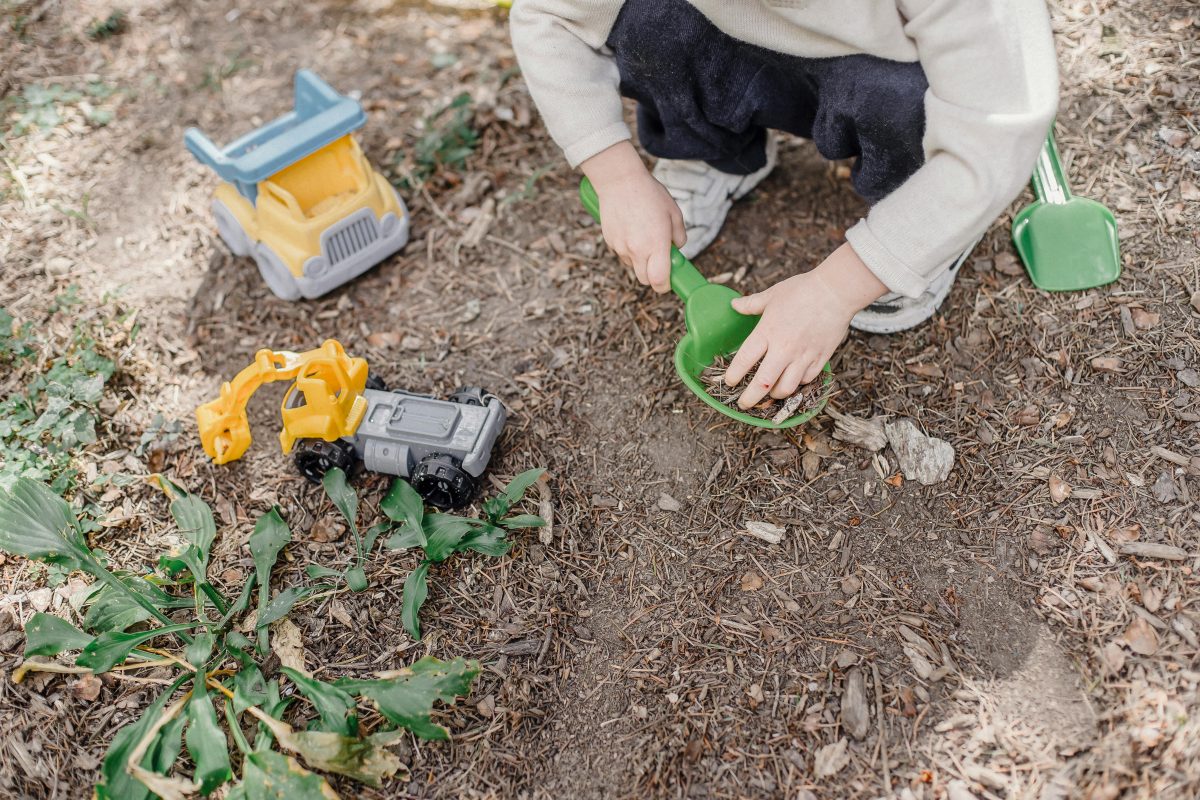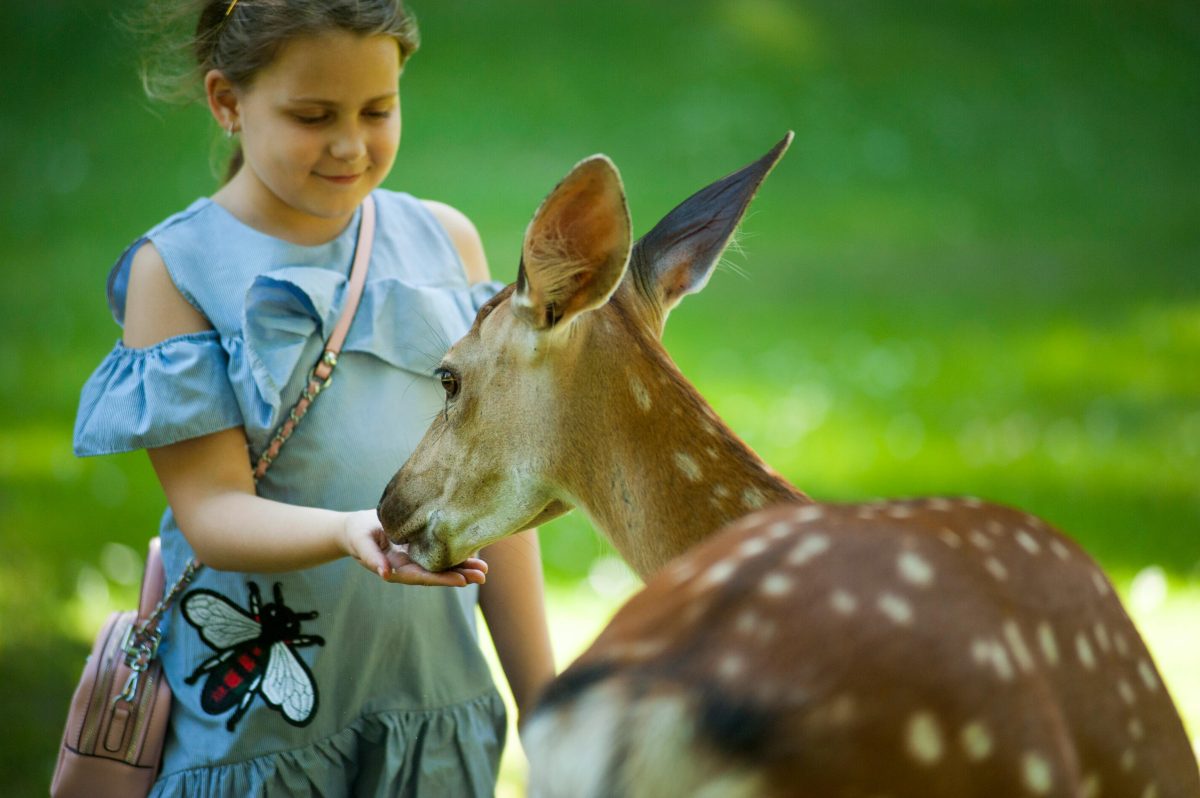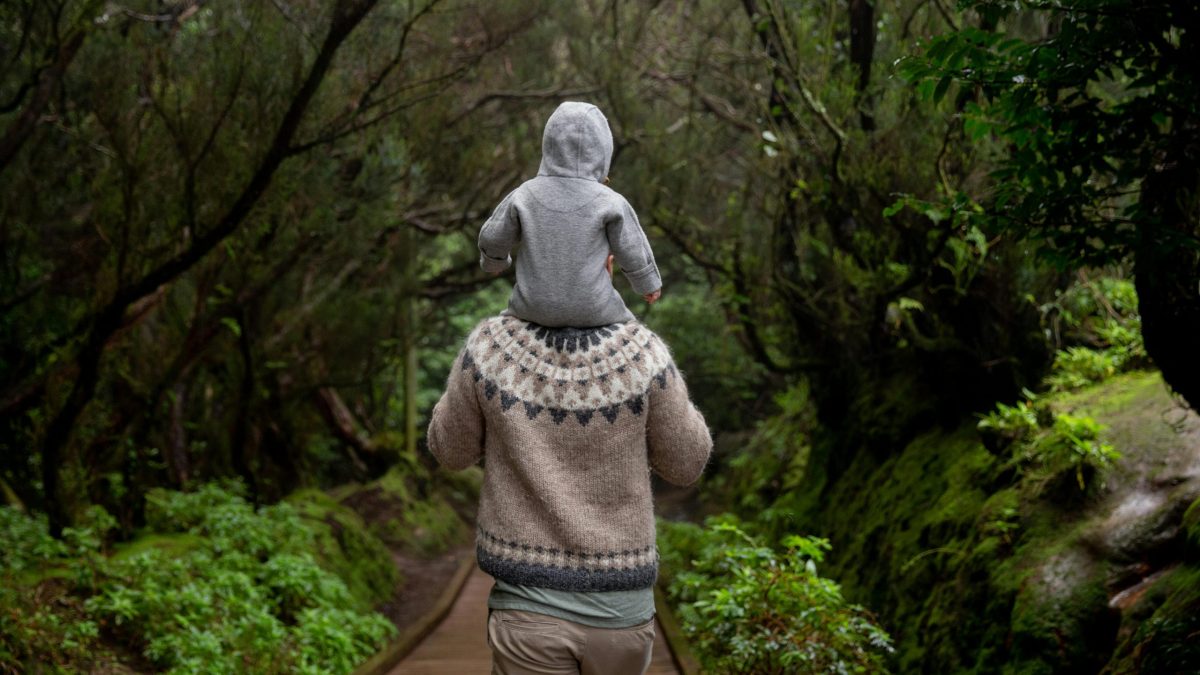A Brief Overview of the Role of Nature in a Child’s Development

Children can benefit greatly from nature in many ways, including physical, emotional, and cognitive development. Their senses are stimulated, physical activity is encouraged, and a sense of wonder and curiosity about the world around them is fostered by natural playgrounds, green areas, and fresh air. Still, there’s a growing gulf between urban living and computer displays that separates today’s kids from the natural environment. It is vital for parents and guardians to actively close the gap between them and environment because this isolation might negatively affect their health and wellbeing. A permanent appreciation for the environment can be instilled in children by parents through the integration of nature into everyday activities and the promotion of outdoor exploration, which lays the groundwork for a healthier and more satisfying life. Therefore, the responsibility of parents and guardians extends beyond simple supervision to include involvement and guidance, transforming every leaf turned and hill climbed into a life lesson and a step toward a closer relationship with the natural world.
Feeding Your Child’s Intimacy with the Natural World

Outdoor Activities Promote Better Physical Health
- Getting kids outside to play is about more than just keeping them away from devices. It’s an essential stage in developing bodies that are healthier and stronger.
- Physical development is greatly aided by outdoor pursuits like climbing trees, sprinting across fields, and playing sports under the sun.
- These exercises strengthen muscles, improve coordination, and promote cardiovascular health. In addition, sunshine exposure raises vitamin D levels, which are essential for strong bones and a healthy immune system.
The Benefits of Fresh Air for Mental Health
- The mind flourishes outdoors just as much as the body does. As a natural stress reliever, nature eases worry and fosters tranquility.
- Children who spend more time in natural environments are generally happier and less likely to experience depression, according to studies.
- Even something as basic as playing in the park can make a youngster happier and more mentally healthy overall.
Learning and Cognitive Advantages: Utilizing the Great Outdoors as a Classroom
- There are countless opportunities for learning and creativity in nature, making it the ideal school.
- Children’s imaginations are piqued in outdoor settings, which allows them to think more freely and come up with inventive solutions to challenges.
- Building a fort out of branches can teach fundamental engineering principles, while wandering a forest can improve observational abilities.
Emotional and Social Development in Organic Environments
- Social and emotional growth is greatly aided by peer interaction in natural environments.
- Children can develop strong, healthy relationships by playing together, working as a team, and communicating in the open spaces found in nature.
- Furthermore, going on outdoor excursions together can develop enduring bonds and memories. The struggles and victories shared in the natural world impart resilience, empathy, and the importance of friendship.
Children who embrace the outdoors reap a multitude of benefits that support their mental, emotional, and physical health. Developing a profound and significant bond with the natural world is one of the most priceless gifts we can give our children as parents. It’s an investment in their future, well-being, and health.
Technology’s Function in Fostering a Connection with Nature

Though it frequently receives a bad image for keeping us indoors, technology may also be a very useful tool for strengthening our bonds with the great outdoors. It’s crucial to strike the correct balance between screen time and outdoor time. Finding ways for them to compliment each other is more important than picking one over the other. When utilized responsibly, technology can complement outdoor experiences rather than take their place.
A plethora of applications and digital resources are available to promote outdoor learning and exploration. For instance, identification applications can help kids learn about various plant, tree, and animal species while transforming a straightforward park stroll into an educational experience. By charting constellations, stargazing applications enhance camping excursions by turning the night sky into an open book just begging to be explored. Children find exploring exciting when they use geocaching apps, which add a treasure hunting element to outdoor adventures.
Beyond merely imparting knowledge, these digital tools pique children’s interest and motivate them to investigate further, pose inquiries, and interact with their surroundings. We can help our kids develop a greater respect for nature by incorporating technology in this way. It’s about nurturing their natural sense of wonder and adventure with every resource at our disposal. So let’s embrace technology and use it as a link rather than a barrier with the natural world.
Building a Home Environment That Is Friendly to Nature

Bringing the outside inside adds vibrancy and life to our houses. Start with indoor plants; they are more than just decorative accents; they are real friends that enhance our living environments by bringing a little bit of nature inside. Choose a range of indoor-growing species, such as the lowly succulents that serve as a reminder of the tenacity of nature or the rich ferns that lend a hint of wilderness.
Additionally, natural materials are quite important. A space can be transformed and given a more natural feel by using materials like bamboo, stone, and wood. These materials provide as a tactile reminder of the blessings of the land in addition to being exquisite. To make your home feel like an extension of nature, decorate with natural materials like stones, pinecones, and shells.
However, why end with décor? Promote the study of animals in your own backyard. Think about this:
- Native plants, bird feeders, and insect motels can transform a garden into a hive of animal activity.
- Not only is it enjoyable to watch birds fly to feeders or bees swarm about flowers, but it also provides an insight into the intricacy of nature.
These modest additions encourage biodiversity and highlight the significance of ecosystems.
Additionally, pets are very helpful in developing a bond with the living world. They serve as teachers as well as friends, guiding kids through life’s cycles, caregiver duties, and the limits of empathy. Through dogs, children learn to nurture and cherish life, values that are crucial in today’s world.
We not only make our homes and daily lives more enjoyable by incorporating nature, but we also instill in our kids a profound and enduring passion for the natural world. It’s about designing an area that inspires inquiry and discovery while reflecting the richness and beauty of the natural world. By doing this, we teach our kids to be good stewards of the Earth, giving them the knowledge and compassion they need to preserve it.
Establishing a Link between the Community and Nature

In order to foster a child’s interaction with nature, community is essential. Children acquire an appreciation for the natural environment through group projects and shared experiences. Participating in neighborhood environmental organizations and events fosters a sense of responsibility for the environment in addition to education. These programs give kids a chance to engage directly with their surroundings, developing a strong sense of kinship with the land.
Engaging in conservation volunteer work as a family can yield tremendous benefits. It’s a chance to spend quality time together and make a positive impact on the globe. These experiences are priceless because they educate kids about responsibility, cooperation, and the power of group effort. They get the knowledge that even modest efforts can result in big improvements, giving them the confidence to alter things.
Children’s relationship to nature is greatly aided by local groups and schools. Teachers are able to teach their students a more comprehensive view of the world by introducing outdoor learning and environmental education into their coursework. Education becomes a dynamic and engaging process when students go on field trips to parks, reserves, and conservation areas. Additionally, by facilitating access to regional environmental projects, these institutions can close the gap between academic understanding and real-world implementation.
In the end, creating a community that is connected to nature needs teamwork. It all comes down to providing a space where kids can explore the natural world with confidence and encouragement. We can raise a generation that values and preserves the environment by getting involved in neighborhood projects, volunteering for conservation efforts, and using the support of institutions and groups. It’s an investment in the wellbeing of our world and the future of our children.
To sum up
A childhood spent in nature is transformed. It enhances young lives with physical vitality and mental clarity by fostering resilience and joy. Children and their families navigate a world where technology enhances the timeless teachings of being outside through the interplay of discovery and learning. This journey encourages us to develop environments that thrive on the richness and beauty of the natural world, both at home and in our communities. It also fosters a deep-rooted appreciation for our planet. Let’s stay on this course and raise a generation that will value and safeguard the environment.
Nurturing Your Child’s Relationship with Nature FAQs
Yes, studies have shown that children who spend more time in nature have improved attention spans, reduced symptoms of ADHD, and better performance in school. Nature stimulates curiosity and critical thinking, enhancing their learning and retention. Furthermore, the calming effect of nature can improve their focus and reduce stress, contributing to a better academic performance.
Start by planting a variety of plants, including native species, to attract birds, butterflies, and other wildlife. Setting up bird feeders or a small water feature can also encourage wildlife visits. This creates an accessible and safe space for your child to observe and interact with nature daily.
Start by scheduling regular outdoor activities that are fun and engaging. This could include walks, bike rides, or even a simple picnic in the park. Over time, these activities can help your child develop a deeper appreciation for nature.
Always supervise young children during outdoor activities and teach them about potential hazards, such as poisonous plants and dangerous wildlife. Equip them with the appropriate gear, such as sturdy shoes, hats, and sunscreen, and educate them on the importance of staying hydrated. Knowing first aid and preparing for emergencies can also ensure a safe and enjoyable experience.
Incorporate games and storytelling into your nature walks or outdoor time, focusing on the plants, animals, and insects you encounter. Use apps or field guides to help identify different species and make each discovery an adventure. This approach turns learning into a fun and interactive experience.
Model respectful behavior towards the environment by not littering, staying on trails, and not disturbing wildlife. Discuss the importance of these actions in preserving natural spaces and the creatures that inhabit them. Encouraging participation in conservation activities can also instill a sense of responsibility towards nature.
Nature exposure is crucial for a child’s physical and mental health, offering opportunities for physical activity, sunlight exposure, and stress reduction. It also stimulates their imagination and creativity, while teaching them about the environment and their place within it.
Address their fears by educating them about the creatures they are likely to encounter, emphasizing the important roles these animals and insects play in the ecosystem. Start with observing from a distance, gradually moving closer as their comfort level increases. This gradual exposure can help reduce fear and build curiosity and respect for wildlife.
Activities like gardening, bird watching, and collecting leaves or rocks can be both educational and enjoyable for children. These activities allow them to observe the cycles of life and the diversity of the natural world up close. They also provide tangible connections to the environment, fostering a deeper bond with nature.
Technology, when used appropriately, can enhance a child’s connection to nature through educational apps, documentaries, and interactive games that teach about the environment. It can also be used to identify plants, animals, and stars, making outdoor experiences more informative and engaging. However, it’s important to balance screen time with actual time spent outdoors to ensure a genuine connection with nature.

